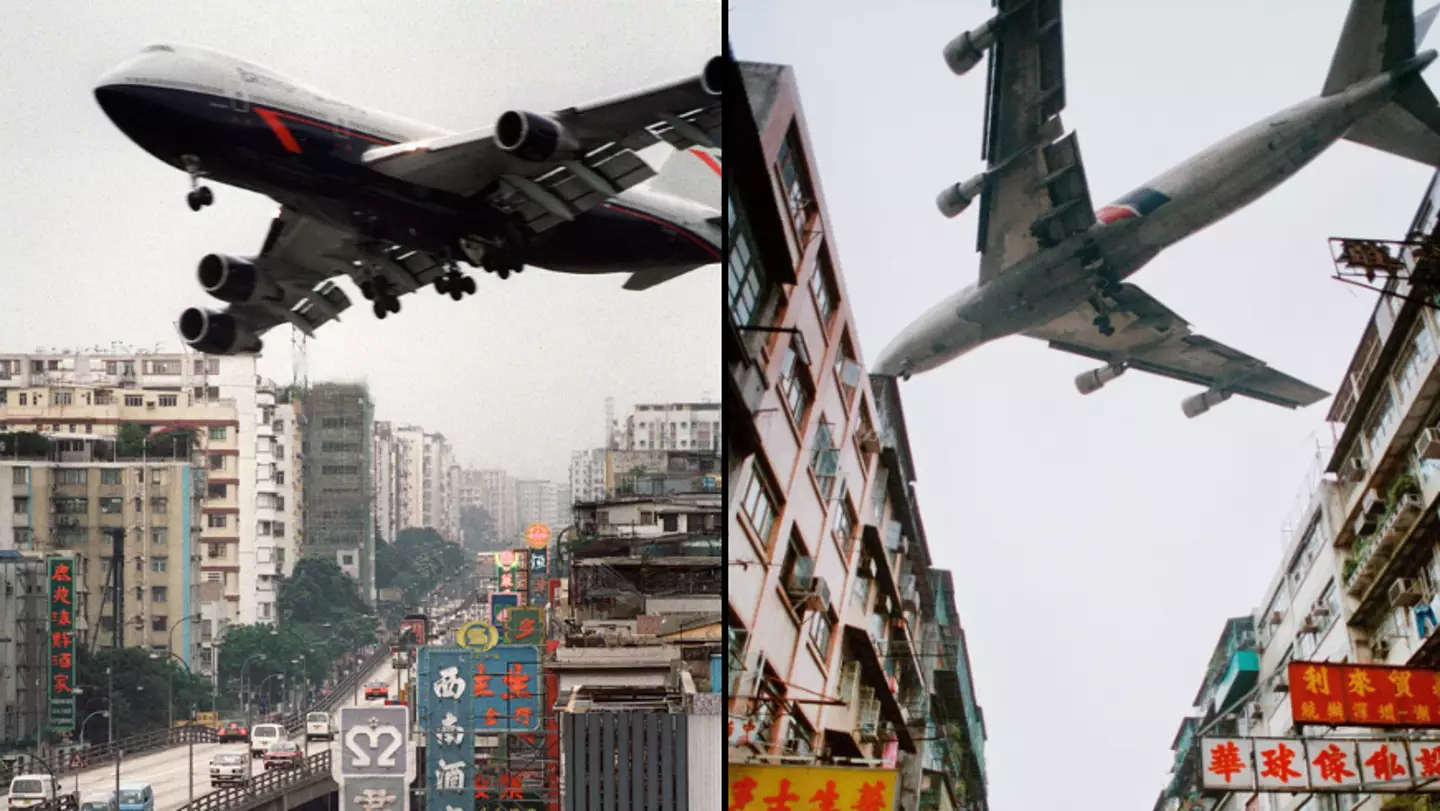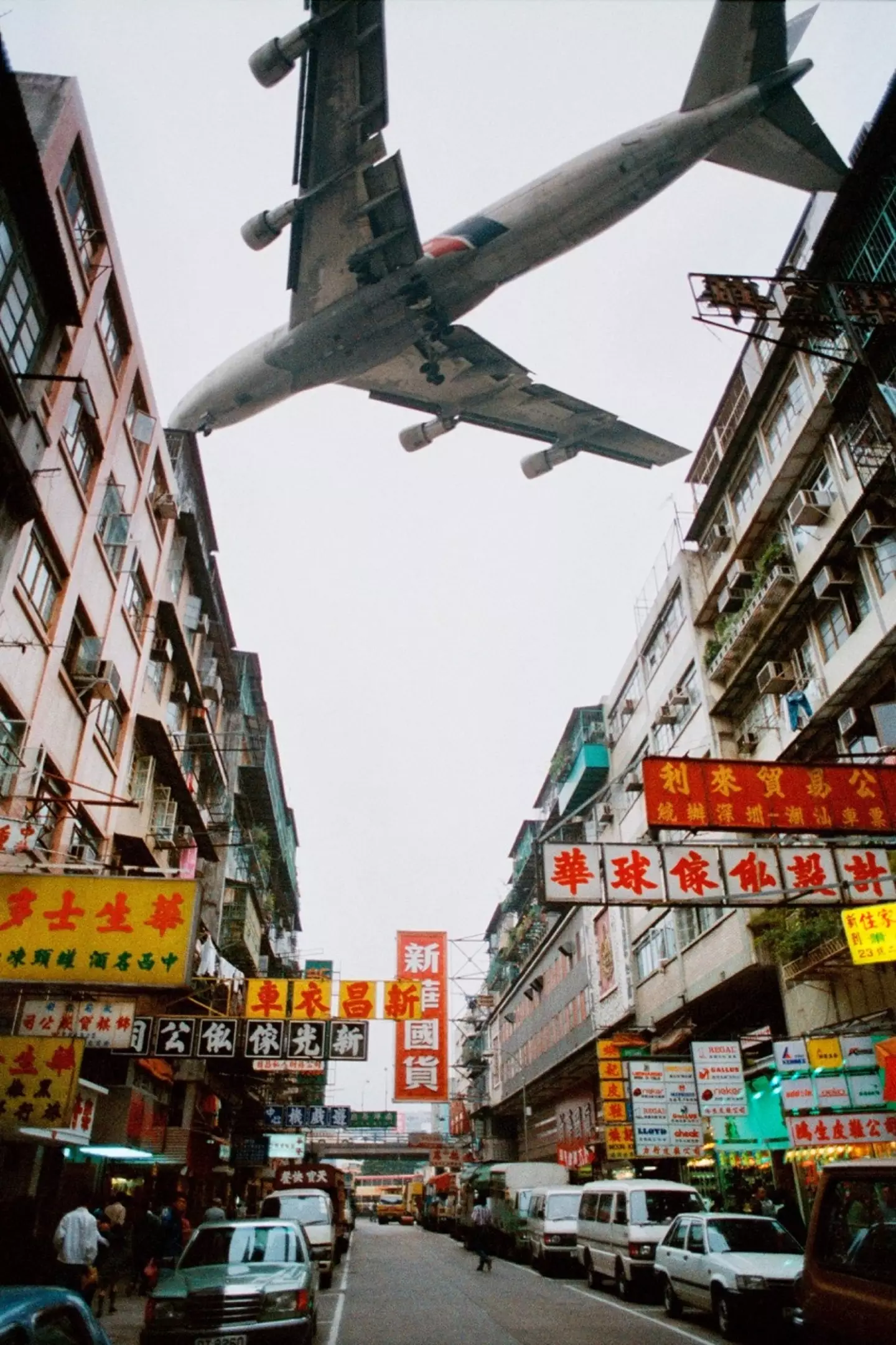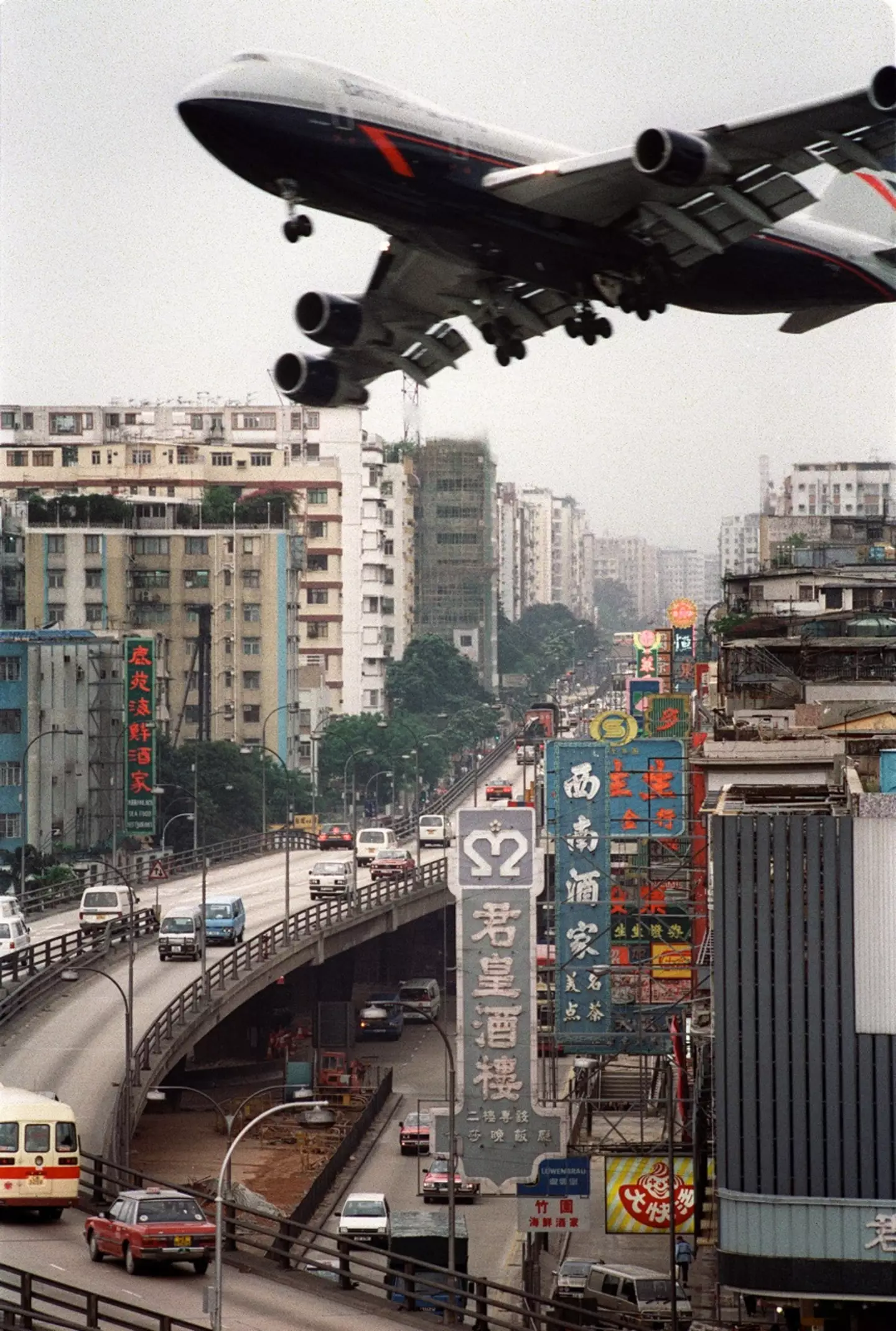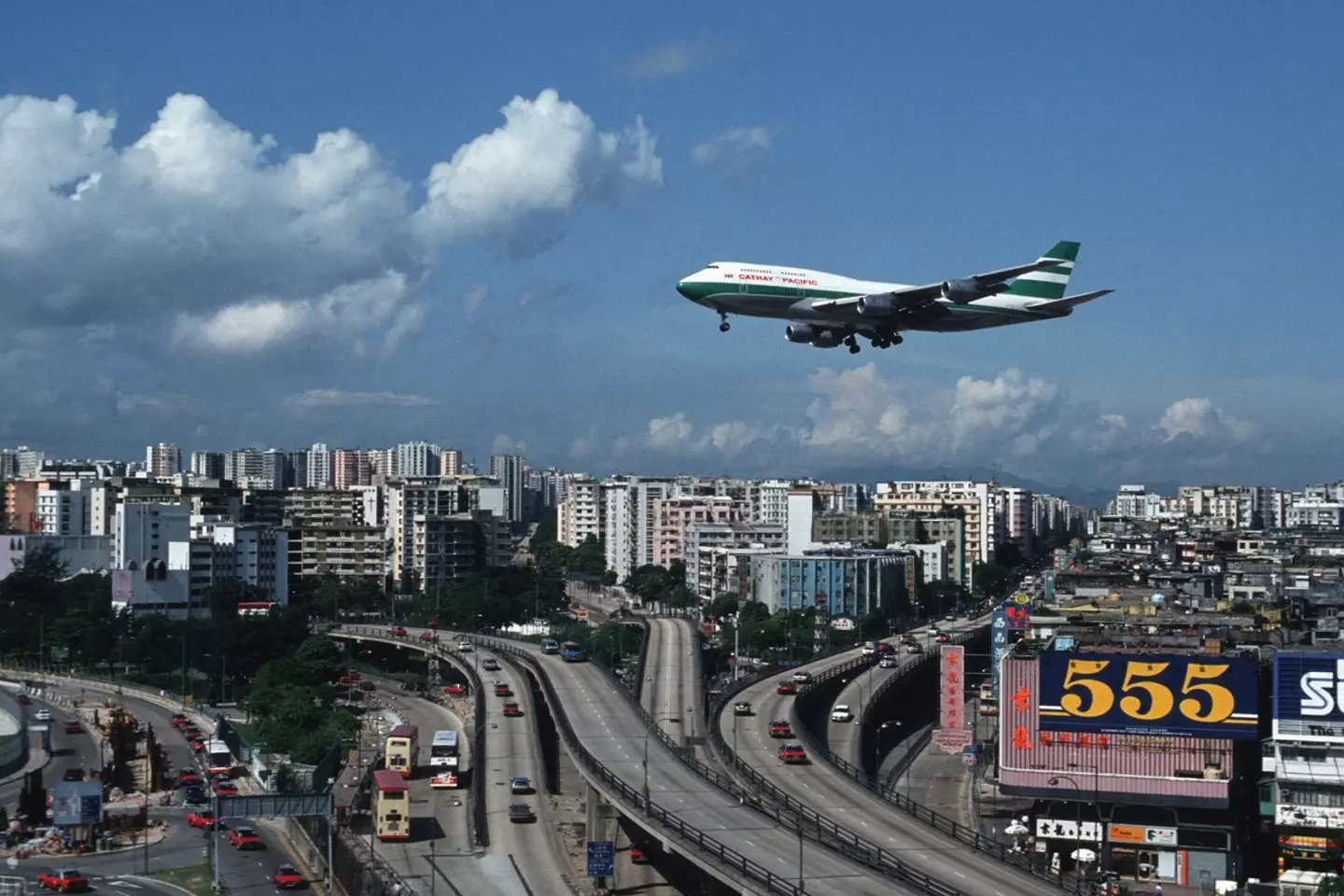
The next time you complain about a bit of turbulence on Ryanair, you might want to thank your lucky stars you were never a passenger on the plane flown by a pilot about to attempt the ‘world's trickiest landing’.
Kai Tak Airport was once the International airport of Hong Kong.
Located on the eastern side of Kowloon Bay in Kowloon, Kai Tak was surrounded by built up apartments and rugged mountains.
Advert
The airport became notorious for its Runway 13, which was nearby a range of hills, reaching an elevation of up to 2,000 ft (610 m).

This meant that pilots were forced to make a series of complex manoeuvres while landing - and there was even a name for it too.
Known as the Chequerboard Approach, pilots would have to make a 47-degree right turn to line up with the runway.
If that wasn’t unnerving enough, they would then have less than two nautical miles to land.
The alternative would be to crash straight into a nearby apartment block - just tens of metres away.
Daryl Chapman, a teacher and aviation photographer from Britain, has lived in Hong Kong since 1987.
He has personally witnessed many close calls on Runway 13.

“Kai Tak was very different to most international airports because it was right in the city,” he told CNN.
“Lion Rock (a prominent hill in Hong Kong) blocks the standard straight-in approach; thus planes had to make that special turn over Kowloon City while landing on Runway 13.
“Being at the Kai Tak car park watching airplanes land in heavy rain could be very worrying.
“The pilots could not see the runway, and landing over Kowloon, you had to be visual with the runway.
“Some (pilots) seemed to wait a little longer than others before they aborted the landing and went around for another go.
“Some would appear out of the low clouds on the approach path, then power up and vanish back into the clouds.”

The scariest memory Chapman has was the landing of an Air France 747-200 freighter.
“We could hear it coming but saw no sign of the landing lights. It was dark,” he said.
“It got louder and louder; then you could see the glow of the red beacon under the plane. He overshot the turn and went right over the car park and control tower as he powered up and went around for another try.
“That was very loud and worrying, as we never saw the actual plane!”
Kai Tak was in operation from 1925 to 1998 and was forced to close because it had begun to outgrow its current site.
With it being one of the busiest airports in the world there was simply no room for expansion.
It was eventually replaced with what we know now to be Hong Kong International Airport.
Topics: Travel, World News